Airborne Wind Energy (AWE)
The wind turbine has become the poster boy of renewables, as any simple google search will indicate.
But as pressure mounts to decarbonise the energy sector, the novel concept of harnessing energy from the wind using tethered kites is gathering momentum.
This up-and-coming field of airborne wind energy (AWE) would unlock access to high-altitude winds while being more versatile and close to invisible.
In this article, we give compare AWEs to traditional wind turbines while introducing some of the most promising projects which are expected to go commercial during this decade.
Contents
- How do you harness energy using kites?
- What are the advantages of AWEs over traditional turbines?
- What are the disadvantages of AWEs over traditional turbines?
- What are the best AWE (kite) designs in 2022?
- Other notable concepts
How do you harness energy using kites?
Before doing any comparisons, it’s worth explaining how a simple kite can harness as much energy as a turbine.
On windy days, the lift force experienced by a kite pushes it upwards into the air while turbulence slaps it in every direction. These forces are opposed by the resistance (pull) provided by the kite’s tether, which transfers the mechanical energy into its anchor point.
This anchor can be fixed to a generator, and the pull force is used to produce electricity (e.g. AWE), or as more commonly seen, the pull force can be used to produce displacement, like in the case of kitesurfers.
In the following section, the multiple diverging use cases of this basic concept will be explored.
What are the advantages of AWEs over traditional turbines?
Kite designs can vary significantly, giving each individual one a different edge over turbines. However, they have these four advantages in common:
It needs significantly fewer materials (i.e. it’s cheaper and greener)
Wind turbines are massive structures that need to be stiff in order for the turning blades to effectively harness the wind’s energy.
This requires large amounts of concrete and steel for the tower, foundations and nacelle, as well as composite materials like carbon fibre and fibreglass for the blades, not to mention the metals needed for the generator, transformer, etc.
On the other hand, kites are connected to land by a narrow tether, significantly reducing the amount of material needed to reach a certain height and for deep foundations, regardless of the complexity of the kite itself.
For example, Kirekraft’s flagship tethered kite equipped with its mounted turbines (relatively material-intensive for a kite!) requires 90% less material than regular wind turbines.
A study shows that a 50MW kite farm would use ~900 metric tons of material over 20 years, which is 70% less than a traditional wind farm of the same power capacity.
And this report suggests that this translates to reduced costs despite the early-stage scaling of AWE, with kite-powered systems (KPS) and high-altitude wind turbines (HAWT) currently being the cheapest sources for onshore energy generation in Northern Europe (including the UK).
AWEs can access stronger, more reliable winds
While wind turbines are limited by the height of their massive towers, kites are flying objects limited only by the viable length of their retractable tether.
This means that kites can access a variety of reliable and powerful winds that exist at high altitudes, as the ground and geographical features exert a drag force on the wind that reduces with height.
On top of this, some have discussed taking advantage of high-altitude air streams like the jet stream that aeroplanes already leverage to fly more efficiently. These currents are ever-present, providing potentially interrupted energy. This can be clearly visualised using the Global Wind Atlas,
Another important thing to highlight is that the amount of kinetic energy carried by the wind increases to the cube of speed, which means that if wind speed doubles, it carries eight times more energy, as you may have experienced when cycling against the wind.
This study suggests that the amount of energy carried by global winds within the atmosphere can cover humanity’s current energy needs 100-fold, most of which are only accessible with kites.
AWEs are adaptable, versatile and scalable
Wind turbines are already adaptable, versatile and scalable. Small ones can fit into single properties, while large ones can be scaled into onshore or offshore farms.
However, kites are arguably even more adaptable as there is more design freedom for specific use cases that can outmatch those listed for turbines.
A small, portable rotating kite can power a caravan or home, a Kitemill is designed to scale into kite farms, and a Skysail is portable and can even be fitted onto cargo boats as a complement to its engines when the wind is favourable.
The portability means that if conditions become non-favourable for operation, units can be moved elsewhere within hours, which is not the case with any wind turbines we have come across.
Also, some of the designs can withstand hurricane/typhoon conditions, which are currently prohibitive for offshore wind turbines.
Reduced visual pollution
Tethered flying objects can be significantly less visible than wind turbines, as the tethers are virtually invisible, and the kites tend to be barely visible from the ground.
In fact, this proof-of-concept kite in the Netherlands was utilized by artist Daan Roosegaard to create a stunning light show by illuminating the tether of the kite in the night sky.
There are also far-fetched concerns that if these kites were implemented at a massive scale, it would create enough shade to affect the Earth’s climate, but this effect was rebutted as negligible by this study, even in extreme situations.
What are the disadvantages of AWEs over traditional turbines?
No system is ever perfect, and the airborne nature of AWEs have some challenges that wind turbines don’t face:
- Infringing airspace: Because of their ability to operate at higher altitudes, kites may utilise the same space normally reserved for commercial aviation, meaning that new regulation is required for operating AWEs.
- Requires significant airspace: The higher the operational height of the AWE, the longer the tether and the airspace that the kite utilises to produce energy. The tether is essentially the radius of the volume within where the kite operates, often flying in an acrobatic fashion as is dictated by the wind conditions.
- Vulnerability to lightning strikes: The system’s height and connection to Earth mean that any system needs to be designed to resist lightning strikes.
What are the best AWE (kite) designs in 2024?
SkySails (Germany)
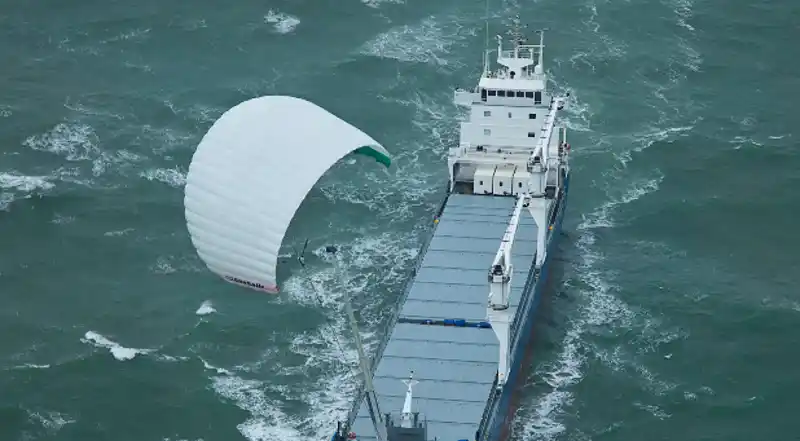
SkySails‘s SKS PN-14 unit uses a simple kite like those in paragliding and kitesurfing and is designed for a relatively low altitude of up to 400m from its anchor point.
The base of the unit has a small crane for take-off, a winch to retract and release the tether, the electricity generator and transformer and a 30-foot container where all these components can be easily fitted for immediate portability.
This adaptability gives it an edge over other kite designs and wind turbines as it can be easily in remote, windy locations (farms, islands, properties), both as a permanent, temporary or emergency solution.
It can also supplement existing energy projects, including both onshore and offshore UK wind farms and solar arrays, and utilise any leftover space available to enhance the farm’s output.
The company’s SkySail Marine arm for maritime solutions tested out larger kites of up to 400-meter squared to complement the combustion engines of large cargo vessels, reducing the fuel consumption by up to 9% while increasing the travel speed when the sails were deployed under favourable wind conditions.
Unfortunately, given that the “biggest impact” would be on electricity production, this solution is not marketed for the time being.
Kitemill (Norway)
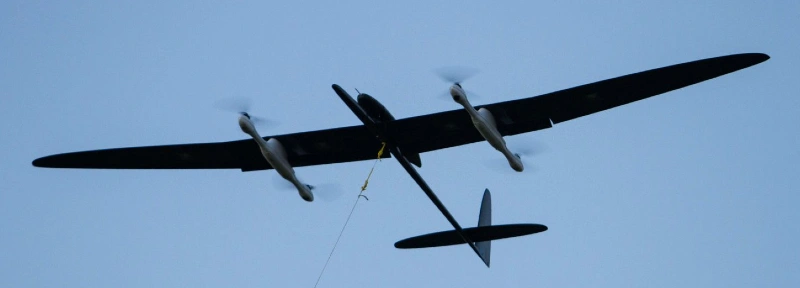
Norwegian-based Kitemill opted for a glider made of composite materials and equipped with 4 propellers for take-off and landing.
The tether is made of braided polyethene fibres and is connected to a winch, sensors and a generator on the ground. The sensors dictate the winch and tether tension to optimise electricity generation.
Kitemill is operating 5 of its propeller-equipped gliders at its Lista test location and has been granted over 3 million euros by the EU to install 150 of its gliders in Norway and Sweden.
Currently, their systems can produce energy below €100/MWh on a 100kW scale which is at the lower limit of offshore wind farms, while projections of €45/MWh for a 500kW farm are expected in future, which can compete with wind turbines, and even be implemented atop existing wind farms.
KiteKraft and Ampyx Power (Netherlands)
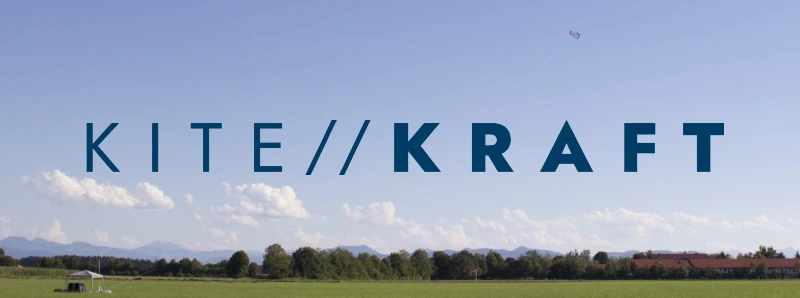
Kitekraft has links to the famous engineering school TU Delft, and has built an AWE glider that has in-built propellers that act both as a motor during takeoff/landing and a generator when cruising.
Unlike the design of Kitemill, the electricity generation happens on the glider propellers and is transmitted to the ground through a conductive tether where it can feed a battery or the national grid.
The concept is heavily research-backed, and its life cycle assessments clearly show its material needs per unit of energy are significantly lower than wind turbines. The drawback is that its design is relatively complex and requires many programmable components.
A 100kW glider is expected to be in Proof-of-Concept operation by 2024, and all going well, it could rapidly be mass-produced at scale for both onshore and offshore applications.
Meanwhile, another TU Delft spin-off Ampyx Power has a working prototype: the 150kW rated AP3, which is already underground Proof-of-Concept in Ireland.
KiteTurbines (Scotland)
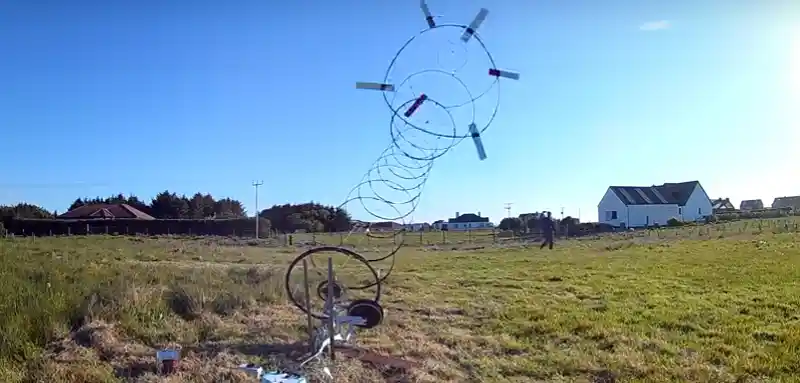
And last but not least, we have British inventor Rod Read’s low-cost, low-wattage Kite Turbine concept, in which a series of small kites are set up in a circular array which encourages them to rotate when exposed to crosswinds and directly produce rotation to power an electricity generator.
The concept has been trialled using homemade materials and artefacts and is now being validated together with modelling from Strathclyde University.
So far, it seems like a great small-scale energy production and a viable option for renewable business energy generation, but perhaps time will prove it’s also a scalable solution.
Other notable concepts
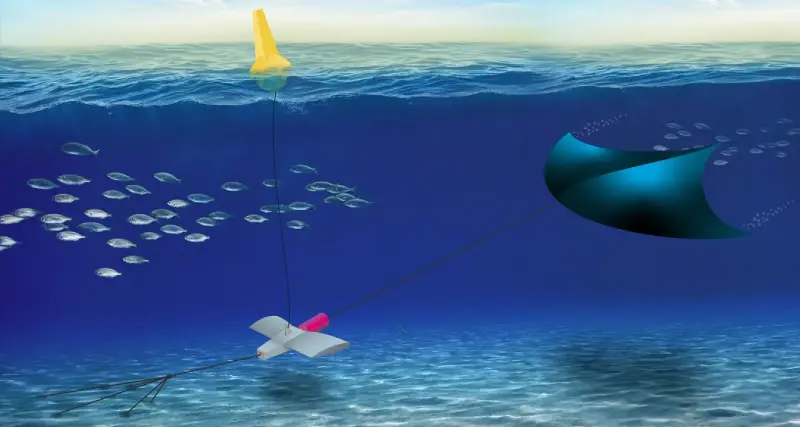
There are hundreds of AWE concepts out there, all at different stages of their development. Since we can’t cover all of them, here are some extra interesting ones to note:
- Kytoons: Kites with integrated buoyant balloons that let the AWEs be airborne for longer and during periods of reduced winds. These systems are actually common and partially used in some of the AWEs described herein.
- Non-airborne systems: Non-airborne systems involve suspending turbines between two prominent objects, such as skyscrapers or between two mountains/cliffs. The wind tunnel effect caused by the anchor features on each side would create higher than average winds to power the turbines.
Reducing your business energy and water bills
As exciting as airborne wind power generation is, it will not affect domestic or business electricity prices anytime soon.
So if cheaper energy bills are what you’re looking for, use AquaSwitch to compare business energy rates available for your property and see if you can make savings just by switching supplier.

